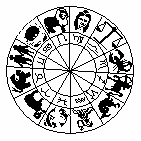
I don't know about you, but I have a hard time reading articles with lots of numbers and statistics in them. There is just something about an article with lots of dates, figures, and percentages that makes my eyes glaze over. I usually skim the paragraphs with the numbers in them and go to the less mathematical paragraphs at the end of the article. After all I read (and write) because I love words.
If I loved numbers, I'd have been a CPA or an IRS agent or an actuarian tables maker for an insurance company. Perhaps it's because articles which contain a lot of numerals remind me of the horrors of 9th grade algebraic word problems (If a train leaves Chicago heading east at 65 MPH and passes 10 geese and a dozen hogs and it rains for the first forty-five minutes, then what is the value of X?), or the very dates-oriented methods of teaching history to children. (1099, 1492, 1776 - sounds like the combination to a safe!)
You know the kind of stories I mean - they are often articles on what would normally be considered a perfectly delightful topic, except that some writer decided that he ought to interview 4 out of 5 experts, and that nearly 76% of the population surveyed (a random sampling of 156,000 math students, apparently!) believed that 29% of the time they preferred read at least 63% of the 2,134 articles read annually to have lots of numbers in them. An average of at least 127 numbers per 3 articles being read.
Of those baby boomers surveyed (born between 1946 and 1963, with 1957 being the peak year, during which some 150 million people were born), they preferred to read numbers (like one hundred and seventy-two or sixty two million, one hundred thousand and twelve) spelled out. but the X generation preferred by a margin of 4 to 1 to have their numbers written in Arabic numerals (perhaps so they can algebraically calculate the value of that ever-mysterious and never defined "X").
Reader's Digest and other consumer information magazines seem to be particularly guilty about this. The cover will boast of an article on illiteracy, only to have that same article filled with numbers instead of words. Gee, I thought illiteracy was the inability to read WORDS, not numbers.
The degeneration of the value of the written word in favor of stats and numbers I believe to be directly attributable to the American obsession with sports. Football, baseball, basketball and other team sports are apparently best reported in terms of numbers. RBI's, batting averages, yardage statistics - why the players themselves are often reduced to a simple number on a jersey! Just read the Sunday paper's sports section and you'll see 76% more numbers.
Business, too, has been reduced to a series of numbers, usually preceded with a $ sign, and accompanied by acronyms. Business success is measured in numbers, with Company X being valued at $1.2 bazillion dollars annually, and Company Y contributing $67 quadrillion per capita to the GNP. The business section of the newspaper is filled with numbers about NASDAQ, the NYSE, and the S&P500 (a nice mix of both numbers and unidentifiable letters...)
Perhaps the best relationship I ever had with numbers was the paint-by-numbers kits my grandmother bought me as a child. And even that was tainted. No matter how meticulous I was, the #64 color that was supposed to be Jesus' beard ended up looking like an indistinct brown blotch next to an indistinct peach blotch (supposed to be skin) above an indistinct blue blotch (supposed to be the fabric of a robe).
I suppose I should be thankful for small favors. At least most people
can understand numbers, if not words. I suppose it would be even worse if
people were ilnumerate, as well as illiterate. Otherwise, they'd never be
able to get the sports scores.